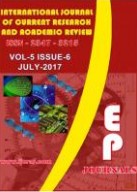Abstract Volume:5 Issue-7 Year-2017 Original Research Articles
 |
Online ISSN : 2347 - 3215 Issues : 12 per year Publisher : Excellent Publishers Email : editorijcret@gmail.com |
2UFR Medical Sciences, Forensic Medicine Institut of Abidjan-Côte d’Ivoire
3National Institute of Public Hygiene, Abidjan-Côte d’Ivoire PO BOX V 14 Abidjan
The aim of this work was to demonstrate the existence of a diverse necrophagous entomological fauna and the order in which these insects appear to colonize a decaying corpse in the open air in the southern forest zone of Côte d’Ivoire. At the three sites selected in the city of Abidjan, Calliphoridae Diptera (1058±129.73 individuals trapped), Sarcophagidae (317.33±14.38) and Muscidae (152.33±11.46), occurring between the 1st and 14th post mortem days, were the first group of insects that colonized the exposed pig carcasses. Between the 14th and the 28th day post mortem, a second group mainly composed of Piophilidae Diptera (767±87.30 individuals harvested) and Coleoptera belonging to the Cleridae (803.33±73.64) and Histeridae families(15.67±1.85), appeared. The family of Stratiomyidae (339.67±49.76 individuals trapped) occurred between the 35th and 42nd post mortem days. These formed with the Piophilidae and the Cleridae, the third group that stayed until the 91st day post mortem. During the advanced decomposition phase, the Coleoptera Dermestidae, Tenebrionidae and Trogiidae appeared. They were added to the necrophagous insects of the third group to constitute the fourth group.The identification of the necrophagous Diptera trapped, made it possible to note the preponderance of the genera Piophila spp. and Chrysomya spp. They represented for 29.12% and 26.57% respectively of the total number of Diptera trapped. The least represented genera were Musca spp. and Calliphora spp. with 5.78% and 3.45% of the total number of Diptera harvested. For Coleoptera, the Cleridae family was the most represented with 91.01% of the total number of individuals harvested at the three sites.As part of an entomological assessment to date a death, these first results give an overview of the entomological fauna existing in the Guinean zone of Côte d'Ivoire and the way it gradually colonizes, a corpse exposed to the outdoors.
How to cite this article:
Koffi Alexandre Franklin, Aboua Louis Roi Nondenot, Dao Hassane, Djojo Mathurin, D.E. Koffi-Tebele Joëlle, E.Y. Kpama-Yapo Carine. 2017. Process of Colonization by Necrophagous Insects, of a Pig Corpse (Sus scrofa domesticus L.) Exposed at Open Air, in the Southern Forest Zone of Côte d'ivoire.Int.J.Curr.Res.Aca.Rev. 5(7): 103-114doi: https://doi.org/10.20546/ijcrar.2017.507.014



Quick Navigation
- Print Article
- Full Text PDF
- How to Cite this Article
- on Google
- on Google Scholor
- Citation Alert By Google Scholar
